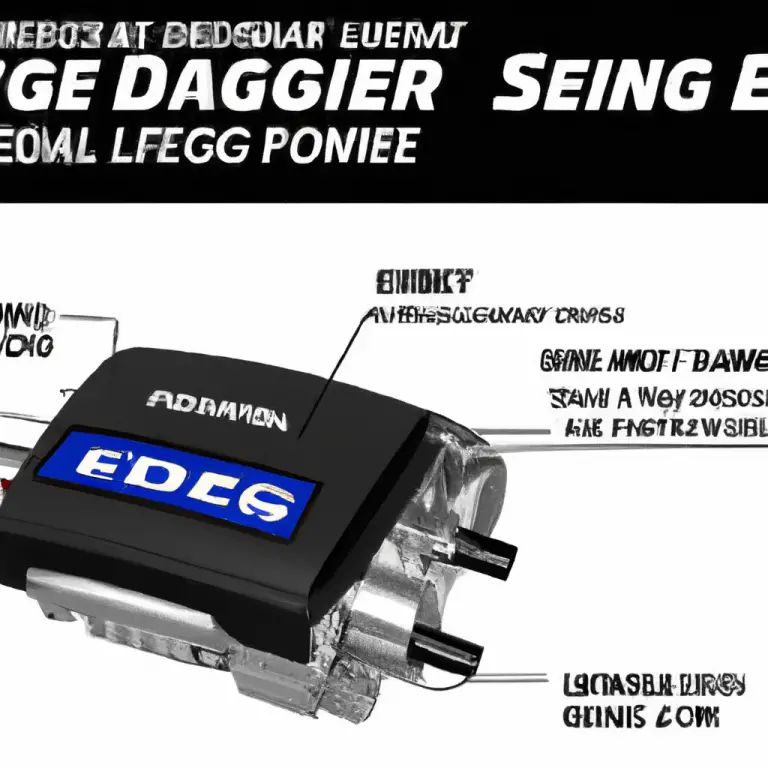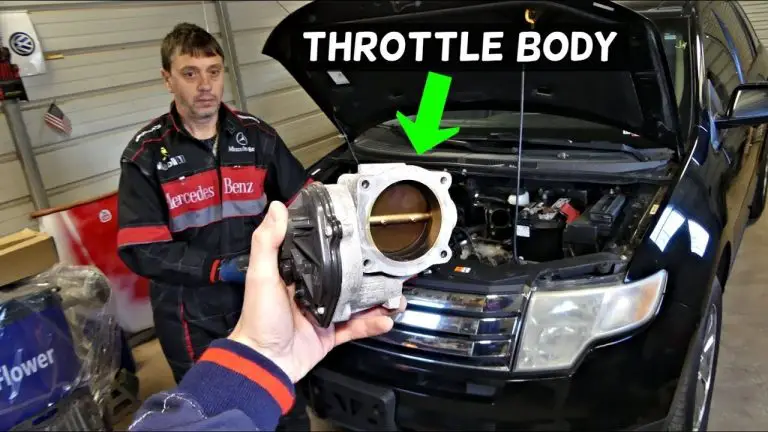How To Replace Fuel Filler Neck On Ford F150
Last Updated on by David Jon
In this comprehensive guide, the focus is on providing clear instructions to Ford F150 owners, DIY enthusiasts, and professional mechanics, who wish to discern how to replace the fuel filler neck on a Ford F150 themselves. Having your vehicle in top-notch condition ensures your journey’s smooth run and assures its longevity. The article delivers astute insights into every step involved in this repair process, thus aiding the maintenance efforts of Ford F150 owners and mechanics.

Identifying the Need for Replacement
A critical step in vehicle maintenance involves recognizing when components require replacement. Recognizing the signs of a faulty fuel filler neck and understanding the repercussions of ignoring this issue can keep your Ford F150 running optimally.
Symptoms of a Faulty Fuel Filler Neck
Typically, multiple symptoms indicate a faulty fuel filler neck. These signs can vary from fuel odors to problems while refueling. For instance, if you notice a strong fuel odor around your vehicle, this could hint at a fuel leak, which may steam from a malfunctioning fuel filler neck. Besides, if your vehicle is taking longer than usual to refuel or is facing issues holding fuel, these could be signs of a defective fuel filler neck. A check engine light may also alert you to these issues.
Consequences of Ignoring a Bad Fuel Filler Neck
Overlooking a failing fuel filler neck can lead to severe problems over time. A faulty fuel filler neck can lead to a dangerous fire hazard due to potential fuel leakage. It can be detrimental to the environment by causing fuel vapor emissions. Moreover, it can cause fuel wastage and lead to expensive repairs down the line.
Understanding the Function of a Fuel Filler Neck
Appreciating the function and operation of a fuel filler neck can simplify the replacement process, making it safer and more effective.
Role of the Fuel Filler Neck in a Ford F150
The fuel filler neck is a critical component of your Ford F150’s fuel system. It serves as the connection between your vehicle’s fuel cap and tank, providing a conduit for fuel to travel during refueling.
How the Fuel Filler Neck Works
The fuel filler neck works by enabling safe and efficient fuel transfer from the pump nozzle to the fuel tank. It is often equipped with a check valve to prevent backflow of fuel. It also connects to your vehicle’s evaporative emissions system, ensuring harmful fuel vapors are properly handled and not released into the environment.
Gathering the Necessary Tools and Equipment
Efficient and safe replacement of the fuel filler neck necessitates the right toolkit and safety gear.
Required Tools for Fuel Filler Neck Replacement
The necessary tools for the job typically include a socket wrench set, screwdrivers, jacks or ramps for vehicle elevation, and new fuel filler neck. Ensure to have these tools readily at hand before commencement.
Safety Gear Needed for the Task
Given the task’s combustible nature, safety is paramount. Protective eyewear, gloves, and use of a fire extinguisher should be considered non-negotiables. Avoid working near open flames or in high-temperature environments.

Locating the Fuel Filler Neck on Your Ford F150
Before initiating the replacement process, it is crucial to know the exact location of the component and how to access it.
Ford F150 Fuel Filler Neck Location
In a Ford F150, the fuel filler neck is located on the vehicle’s rear side, typically on the driver’s side. It extends from the fuel intake flap down to the fuel tank.
How to Access the Fuel Filler Neck
Accessing the fuel filler neck usually involves lifting the vehicle using appropriate tools like a vehicle lift or a jack and jack stands. Once the vehicle is safely raised, the fuel filler neck can be located and accessed from underneath the vehicle, towards its rear end.
Preparation Prior to Replacement
Preparing before replacement involves a process of steps, each playing a vital role in ensuring a seamless replacement process.
Removing the Gas Cap
The initial step involves removing the gas cap. By doing this, you relieve any built-up pressure within the fuel system, making the following steps safer.
Draining Remaining Fuel
With the gas cap removed, the next step involves draining any remaining fuel from the fuel filler neck. This step is vital to prevent potential fuel spillage during the replacement process.
Disconnecting the Battery
As you are dealing with the fuel system, it is advisable to disconnect the vehicle battery before proceeding with the replacement task. This reduces the risk of sparks or electric discharge around the fuel system.
Removing the Existing Fuel Filler Neck
The removal process of the existing fuel filler neck involves a few technical steps. We recommend following the Ford F150 owner’s manual to ensure safe removal.
Loosening the Fuel Filler Neck
With the vehicle lifted and secured, you should proceed by loosening the fuel filler neck. This usually involves removing the fasteners connecting the neck to the fuel tank and the body of the vehicle.
Detaching the Fuel Filler Neck
After loosening, the old fuel filler neck should then be detached carefully from the vehicle. Remember that you may need to disconnect a few hoses in the process. It’s essential to keep track of their respective connections for easier re-installation.
Tips for Safe Removal
During removal, we suggest careful attention to precautionary measures. Wearing safety equipment, ensuring proper ventilation, and securing the vehicle elevated correctly can significantly mitigate potential risks.
Installing the New Fuel Filler Neck
The process of installing a new fuel filler neck starts with preparation and ends with rigorous checks to ensure proper installation.
Prepping the New Fuel Filler Neck
Before installing the new part, you should inspect it carefully for any signs of damage or manufacturing defects. Ensure all the connection points are similar and it matches the specifications of your Ford F150 model.
Securing the New Fuel Filler Neck in Place
Installation involves reversing the removal steps—connecting hoses, ensuring a secure connection to the gas tank and vehicle body, and replacing fasteners using appropriate tools.
Checking for Proper Installation
After installation, it’s crucial to perform a thorough check to ensure the component has been correctly and securely installed. Rechecking the connections and fasteners is a good place to start.
Post-Replacement Procedures
The tasks to be performed after successful replacement of the fuel filler neck involve reconnecting the battery, refueling the vehicle, and responsibly disposing of the old filler neck.
Reconnecting the Battery
After ensuring a proper installation, your first step should be to reconnect the battery. Be gentle and make sure the connections are secure.
Refueling and Checking for Leaks
Proceed by adding a small amount of fuel to the tank and carefully observing for any leaks around the new filler neck. Make sure to perform this observation in a well-ventilated area. If no leaks are detected, continue to a full refill.
Proper Disposal of Old Fuel Filler Neck
The old fuel filler neck should be disposed of in a responsible manner conforming to local regulations. Using a certified recycling facility is usually a safe bet in ensuring proper disposal.
Potential Issues During Fuel Filler Neck Replacement
You may encounter a few complications while performing a fuel filler neck replacement on your Ford F150. Recognizing these issues and identifying when to seek professional assistance can be crucial for maintaining the wellbeing of your vehicle.
Common Complications and How to Tackle Them
Among the most common complications, one may face are rusted or inaccessible fasteners, difficulty aligning the new component, or an incompatible part. These can often be overcome using penetrating oils for rusted fasteners, patience and a careful hand for alignment, and ensuring you’ve purchased the correct part for your specific vehicle model, respectively.
When to Seek Professional Assistance
Despite our best efforts, some complications are beyond our scope. If you face persistent issues, particularly concerns about correct installation or recurring problems after the replacement, it is wise to consult a professional. Taking services from a Ford certified mechanic or dealership can help ensure your vehicle receives the highest standard of care.
Maintaining Your New Fuel Filler Neck
Post-installation care is equally crucial in extending the lifespan of the new fuel filler neck. Regular maintenance and preventing potential issues can ensure the longevity and performance of your investment.
Regular Maintenance Tips
Maintenance includes regularly checking for signs of wear or leaks, especially after driving in harsh conditions. Inspecting your fuel system for potential defects during routine maintenance checks can help you detect issues early.
Signs of Future Fuel Filler Neck Problems
Future problems could manifest similar to the initial symptoms—fuel odors, loose gas cap, difficulty refueling, or check engine light. Recognizing these signs early can help mitigate larger issues down the line.
Preventing Fuel Filler Neck Issues
Preventive measures can significantly reduce the chances of recurring fuel filler neck issues. Regular inspections, promptly addressing minor leaks, and using only high-quality replacement parts can go a long way in maintaining the function and safety of your Ford F150’s fuel system.



